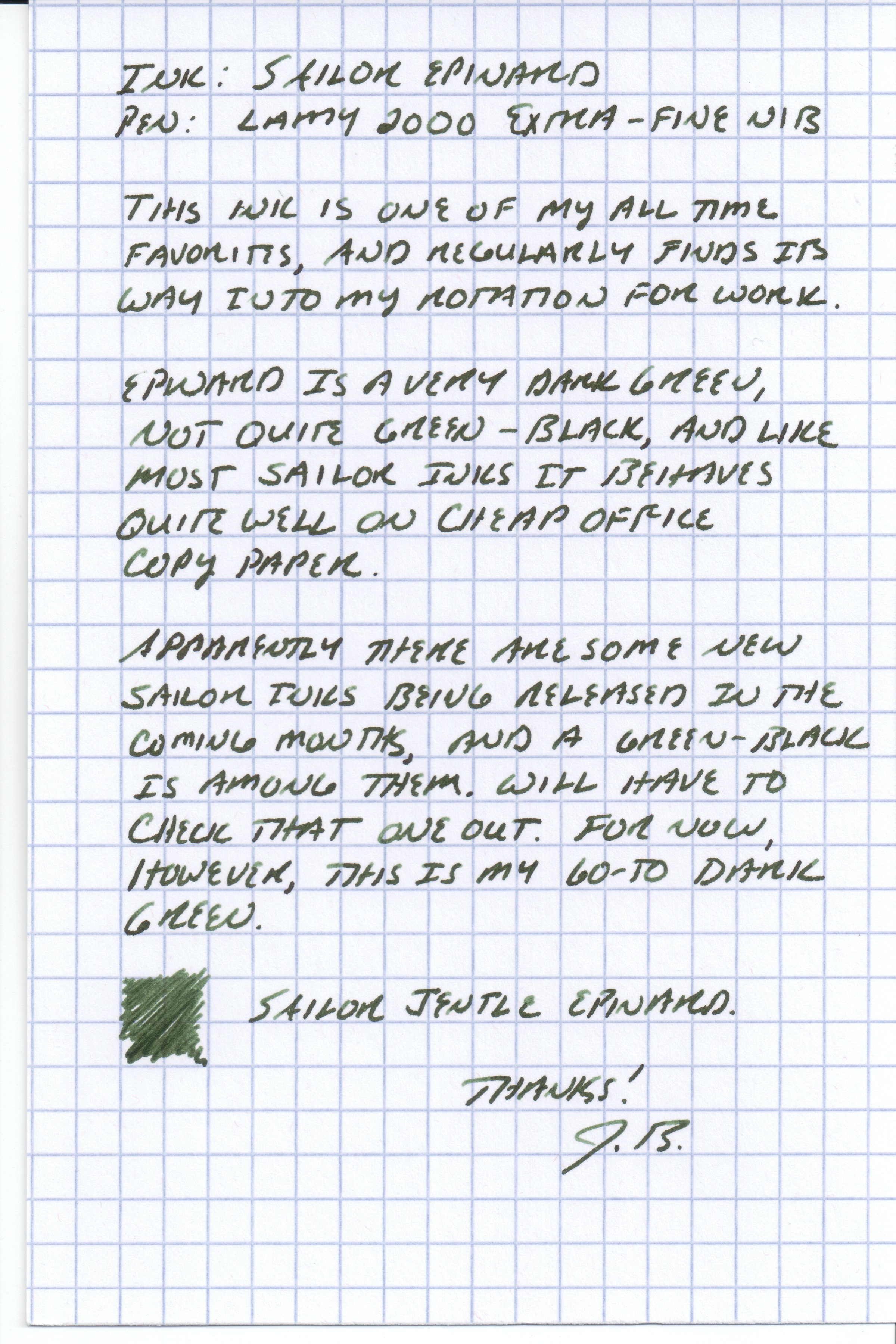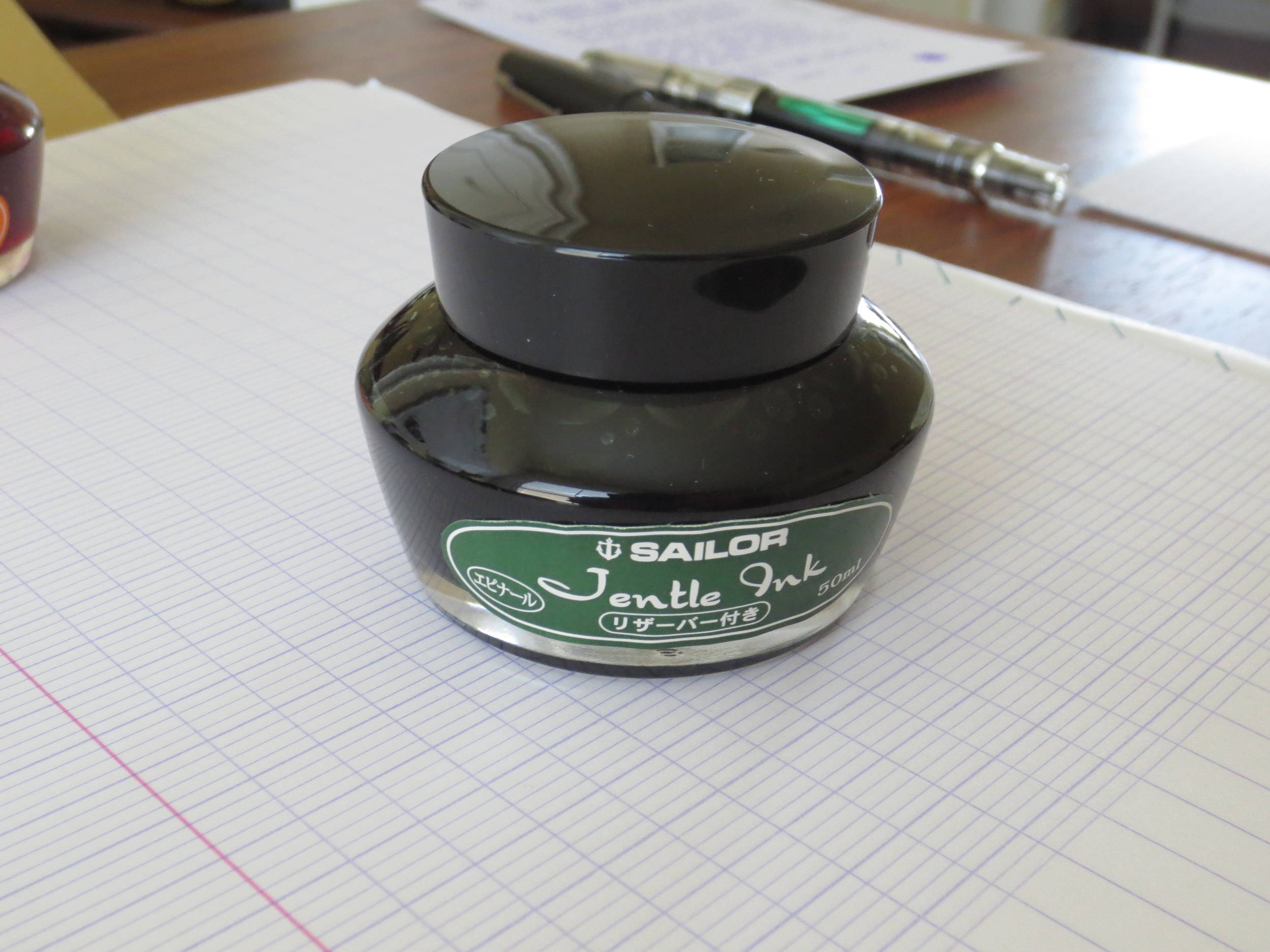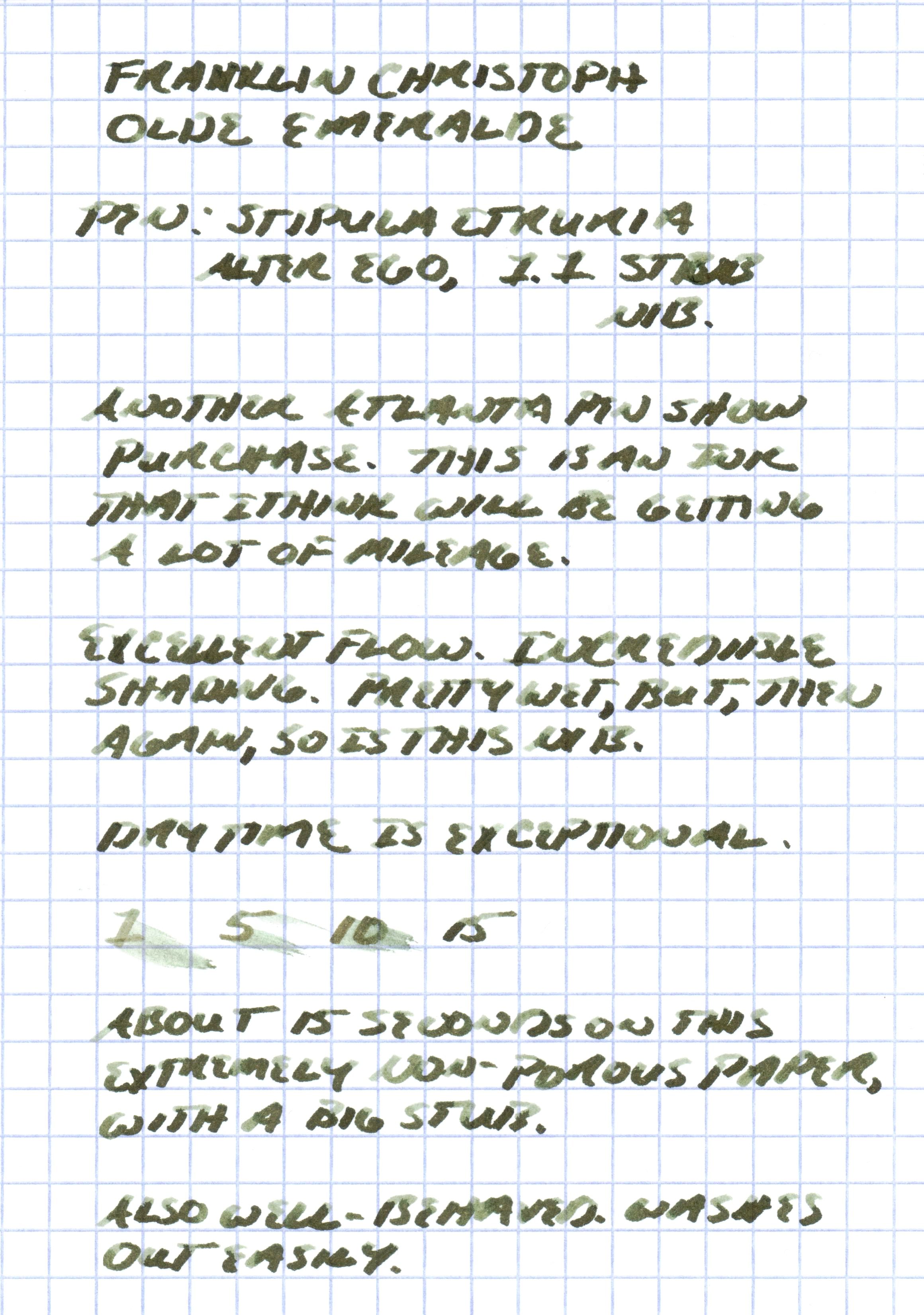In a more traditional professional setting, you can sometimes find yourself a bit restricted in terms of what ink you feel comfortable using at the office. Sure, blue, black, and blue-black are the “safe” choices, but there are benefits to choosing a color that stands out a bit more. Whether your job involves project-based collaborations, or drafting documents subject to comments and revisions by multiple people, situations will arise when you’ll want your comments and input to stand out from the rest of the herd. Personally, that’s when I reach for the red or the green.
While both Montblanc Irish Green and Bungubox Norwegian Wood are darker greens, I wouldn’t call them green-blacks. They have more blue in them.
Before I go further: Yes, I know that green ink carries some baggage. Apparently, in the UK especially, green ink has become associated with so-called “green ink letters.” Back in the day when people actually still wrote physical letters to the newspaper, the more “interesting” submissions were stereotypically written in green ink. Just look up the term “Green Ink Brigade.” That said, there is also a tradition of green ink being used by MI6 and the British intelligence services, so you’re not necessarily labeling yourself as a nut by signing that memo to your boss in green.
Writing samples done with the Kanilea Pen Co. Mauna Kea (left) and Leonardo Momento Zero Grande Arlecchino (right).
For professional purposes, I prefer a classic darker green, but not necessarily a “green-black.” Green-black inks tend to see use as substitutes for standard blues or blacks as a drafting ink, whereas for editing or annotation I prefer a true green. The two I have been using lately are Montblanc’s Irish Green, which has been a favorite for years and previously reviewed on its own, as well as Bungubox Norwegian Wood Emerald, which is a shop-exclusive Sailor ink that made an appearance in my list of Best Fountain Pen Inks for Editing and Annotation. I traveled with both loaded into pens on my trip last week, and what I love about both inks is that they are generally low-maintenance and dry quickly, a key consideration for a professional road trip where you have to take quick notes in a conference or on a trade show floor.
Takeaways and Where To Buy
Both green and red inks sometimes bear an unfair connotation as unnecessarily loud or obnoxious colors for writing. That needs to change. You can only take so many blues, blacks, blue-blacks, and even purples in the professional context, and greens present an opportunity to distinguish yourself a bit without going full-on orange shimmer ink. I get more comments - nice ones - on my green inks at work than any other color, and they show especially well in written correspondence.
Both of these inks look exceptional on bright white paper, here Clairefontaine French Ruled.
As luck would have it, of course, these two specific inks are becoming somewhat difficult to find. While Montblanc Irish Green is a standard option in Montblanc’s ink lineup, it’s becoming harder to find an independent U.S. pen retailer that stocks Montblanc due to what I understand to be a policy that all authorized retailers have a brick-and-mortar store. Both Dromgoole’s and Appelboom currently have Irish Green ink in stock. On the other hand, Bungubox inks are made in much smaller runs, and I heard that Sailor recently required that they impose a hefty price increase on these inks in the U.S., so that Bungubox inks now cost nearly $40 for a 30ml bottle. I love Norwegian Wood, but there are other options and I likely won’t be purchasing the ink again at the new price point unless something changes. If you absolutely must have this color, Pen Chalet stocks most Bungubox colors.
If you’re interested in reading further, I’ve previously reviewed dark greens that lean more green-black, as well as lighter “grass green” inks.
Disclaimer: I purchased both bottles of ink featured in this review with my own funds, for my own use. This post contains affiliate links.





